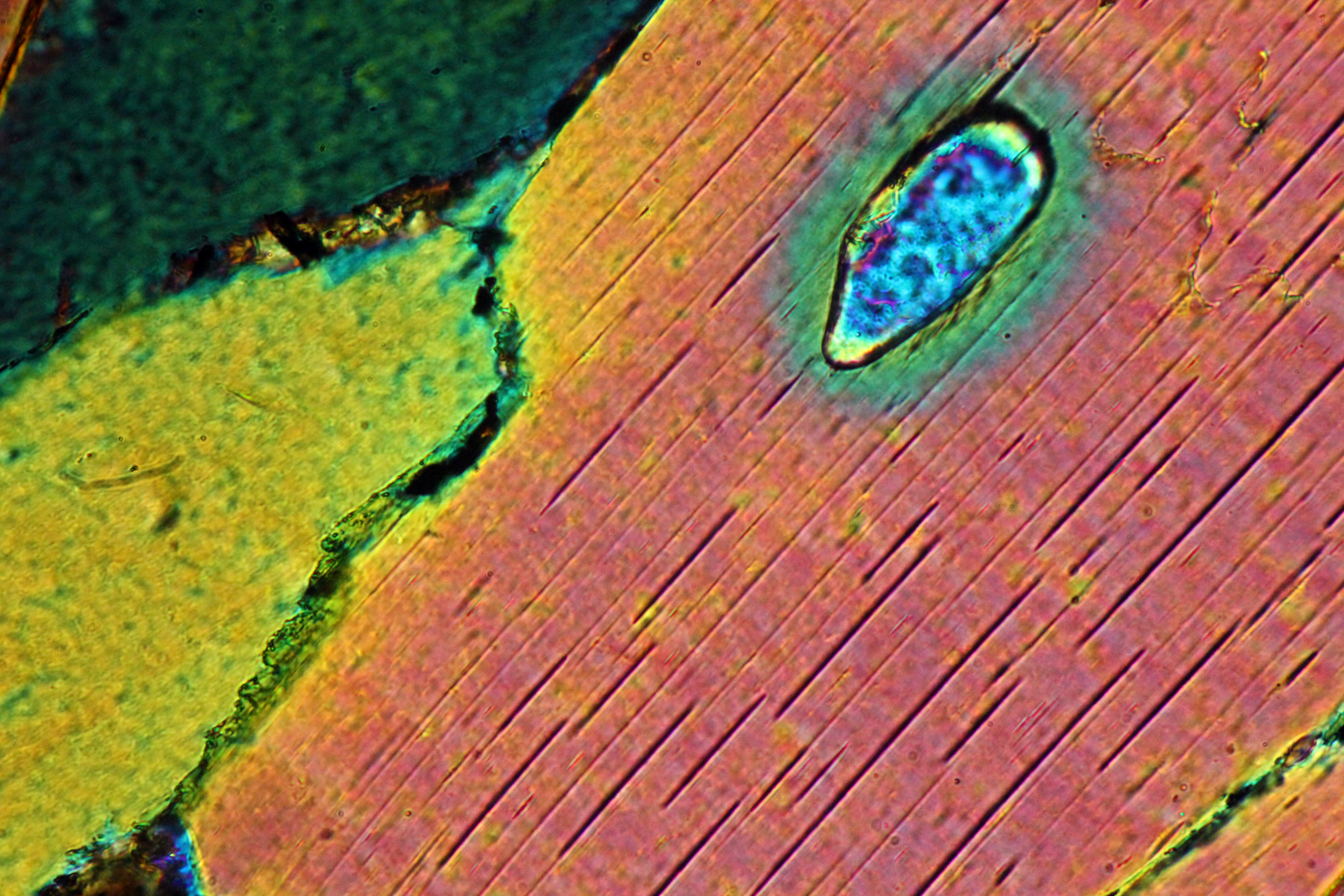
A few facts about zircons
Posted at 10:00 on 13 November 2017
Before we discuss the sixth of Answers in Genesis's ten best evidences for a young earth, a little background knowledge is in order. Their argument about helium in radioactive rocks concerns zircons — small crystals of zirconium silicate (ZrSiO4). They are some of the most reliable and accurate "timestamps" that YECs claim rocks don't come with.
They occur in all different types of rocks throughout the earth's crust, and have several interesting properties that make them particularly well suited to the purpose. Consequently they crop up frequently in more informed discussions about the age of the earth.

(Source: Wikimedia Commons)
The most important feature of zircons is that they accept certain elements into their crystalline structure as impurities, but not others. They can contain up to about 1% uranium when they first form, but they strongly reject lead. This is because uranium atoms have the right size and valency to fit into their crystalline structure, whereas lead atoms do not. A freshly formed zircon crystal will contain no more than a few parts per trillion of lead (Gehrels, 2010); anything more than that must be radiogenic in origin. One part per trillion corresponds to about four months' worth of radioactive decay.
Another important property is that they are very hard (7.5 on the Mohs scale of hardness — somewhere between quartz and topaz). That, and their small size (typically a fraction of a millimetre) makes them strongly resistant to weathering. Zircons also have a very high melting point — over 1,800°C — and a closure temperature well in excess of 1,000°C. The closure temperature is the temperature above which the impurities in the zircons start to become mobile and can thus diffuse out, thereby resetting the radiometric "clocks."
Uranium decays to lead via a number of intermediate elements, with a half-life of 700 million years for 235U → 207Pb, or 4.5 billion years for 238U → 206Pb. Naturally occurring uranium consists of about 99% 238U and only about 0.72% 235U.
What does this mean for the age of the earth? For starters, if there has been any leakage, lead will have been preferentially lost, while if there has been any contamination, uranium will have been preferentially gained. This means that the U-Pb model age of the zircons will always be a lower limit. If it is incorrect, the zircons will be older than the naive dating method indicates. This does not help the young-earth cause.
In fact, it gets better than that. Because there are two isotopes of uranium, which decay at different rates, it is possible to determine not only whether there has been any leakage, but also when, and to what extent. This is done using a concordia diagram.
More importantly, this also means that after six thousand years, zircons should not contain more than about eighteen parts per billion of lead. Thus, any zircons which contain significantly more than that will blow the young earth timecale right out of the water. As for accelerated nuclear decay — which, as we've already seen, is science fiction — that would have released enough heat to melt the zircons and reset the "clocks."
Since lead atoms do not fit naturally into a zircon's crystal structure, zircons that have seen a large amount of decay tend to become brittle, eventually completely losing their crystalline structure and becoming amorphous. This process is called metamictisation. On heating, the impurities will anneal out, restoring the crystal structures of the zircons to their original, pristine condition. Again, we should not expect to find metamict zircon crystals in a young earth.
In practice, uranium-lead dating of zircons is one of the most reliable and accurate radiometric dating methods that scientists have at their disposal. It can give ages that are accurate to between 0.1% and 1%.
Now of course there is another product of uranium-lead nuclear decay: helium from alpha particles. What happens to the helium? That is the subject of next week's post.
Featured image credit: Wikimedia Commons